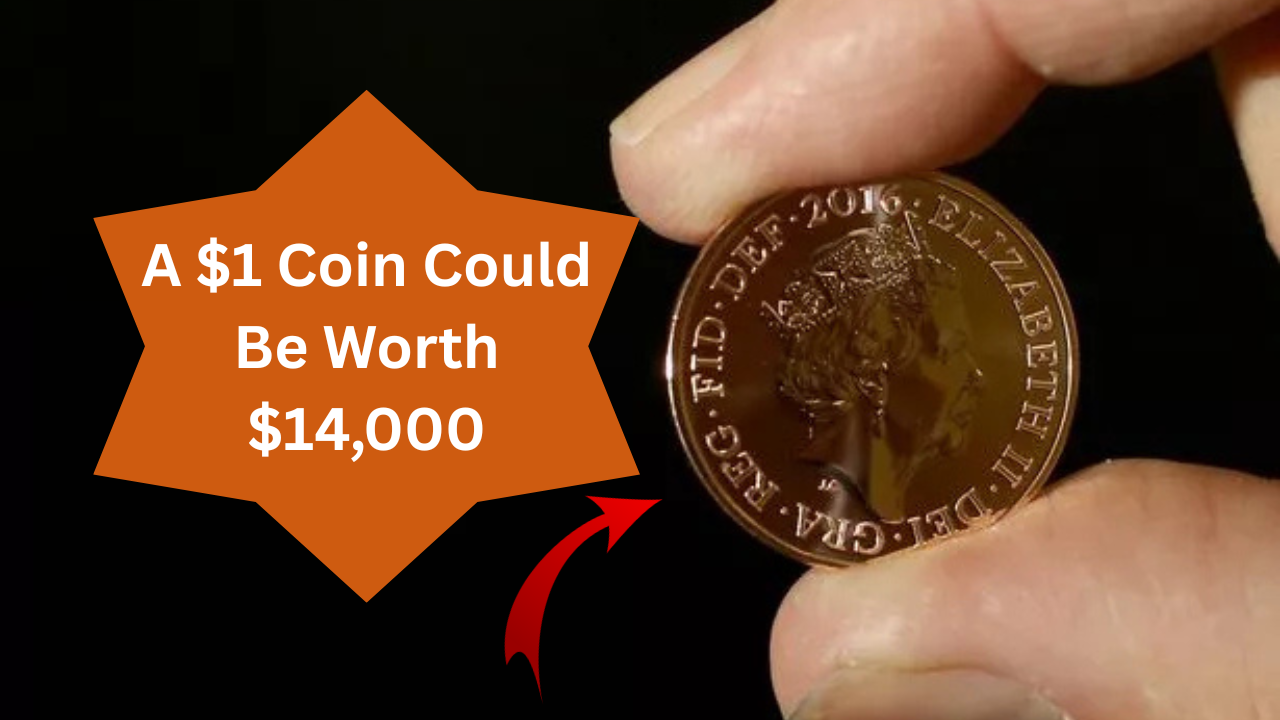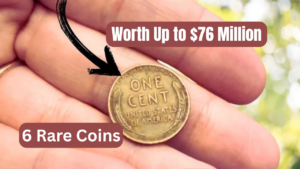A Single Coin May Be Worth $14,000 – Check your pocket change! A few $1 coins are now trading for thousands because they’re rare, in good condition, or because of unique minting errors. Want to see if you have a winner? Sort through your coins – you may have one worth much more than its face value. Coin enthusiasts are willing to purchase these scarce coins, making common pocket change potentially good investments.
$1 Coin is worth of $14,000
| Feature | Details |
|---|---|
| Coin Type | $1 coins, including Eisenhower Dollars and Susan B. Anthony Dollars |
| Rarity | Coins with minting errors, no mint marks, or exceptional condition |
| Top Value | Up to $14,000 for rare or error coins |
| Evaluation Steps | Identify coin type, check mint marks, assess condition, and consult experts |
| Reference | Visit the Professional Coin Grading Service for additional resources |
| Common Sources | Inherited collections, flea markets, old coin jars |
Some $1 coins can be enormously valuable because they possess rare characteristics combined with excellent condition accompanied by unique imperfections. Professional confirmation through detailed evaluation processes establishes the worth of these particular coins. Both novice and experienced numismatists should examine their wallet and coin jar because you could find priceless treasures. These coins function simultaneously as authentic history lessons about the past and artistic masterpieces giving them dual value.
Why Some $1 Coins Are Worth$14,000?

Each one dollar coin differs in value from other one dollar coins. Rarity because of low-supply and distinct mistakes and historical significance boost the market value of this coin collection above its dollar amount. Current collectors and investors value unique collectibles because two 1970s release coins namely the Eisenhower Dollar along with the Susan B. Anthony Dollar became such valuable items.
Coin value emerges from three main factors that include scarcity and skillful production as well as maintenance quality levels. An essential historical link exists between Eisenhower Dollars because they stand as the final circulation series of large-size dollar coins minted by the United States. The valuable quality among coin collectors exists in three ways: through distinctive minting characteristics and original design patterns and through uniqueness features such as mint faults or nonvisible mint marking. While smaller in dimensions the Susan B. Anthony Dollar stands notable because of its feminist message.
A few coins reach thousands of dollars because they have limited numbers along with excellent preservation. Coins that have never circulated and are graded by professional services can fetch considerably great values on the market. Such coins enable investors to hold an appreciating asset while maintaining a valuable tangible item.
How to Recognize High-Value $1 Coins worth $14,000?
Finding a high-value coin can be as easy as doing these steps:
1. Determine the Coin Type and Year

Begin by determining the type of $1 coin you have. Some common types are:
- Eisenhower Dollars (1971-1978): These big, silver-dollar-looking coins are usually ignored but are worth a fortune if they have no mint marks or are errors.
- Susan B. Anthony Dollars (1979-1981, 1999): Smaller than Eisenhower Dollars, with a distinctive design and possible minting errors.
2. Look for Mint Marks
Mint marks show where a coin was made. Small letters that are usually found close to the date. These are the typical mint marks:
- No Mint Mark: Made in Philadelphia and usually worth more.
- “D”: Made in Denver.
- “S”: Made in San Francisco.
- Coins that have no mint marks or specific errors are less common and thus more expensive.
For example, the lack of a mint mark on a Susan B. Anthony Dollar might mean that it was included in a special minting run.
3. Evaluate the Coin’s Condition

The condition of the coin is a significant factor in setting its value. Grading companies like the Professional Coin Grading Service (PCGS) employ a 70-point grading
system, with higher values representing improved condition. Inspect for:
- Mint Condition: No apparent wear and tear.
- Circulated Condition: Evidence of wear from being used but still readable.
- Coins graded MS65 (Mint State 65) or higher are prized by collectors and investors. Even investing in coin holders can also help maintain the value of a coin.
4. Search for Errors or Unique Characteristics
Errors during minting are a dominant consideration in high prices. Most common errors are:
- Double Dies: Letters or numbers look double.
- Off-Center Strikes: The design on the coin is off-center.
- Missing Mint Marks: Some coins were inadvertently distributed without mint marks.
FAQs:
How can I tell if my coin has a minting error?
Examine the coin closely for doubled letters, off-center designs, or missing mint marks. A magnifying glass can help.
What is the most valuable $1 coin?
The 1974-D Eisenhower Dollar and certain 1979 Susan B. Anthony Dollars are among the most valuable, worth up to $14,000.
Can I clean my coin to increase its value?
Cleaning coins improperly can decrease their value. Use gentle cleaning methods or leave cleaning to professionals.
Where can I sell valuable coins?
You can sell coins at auctions, through online platforms like eBay, or to reputable coin dealers.


